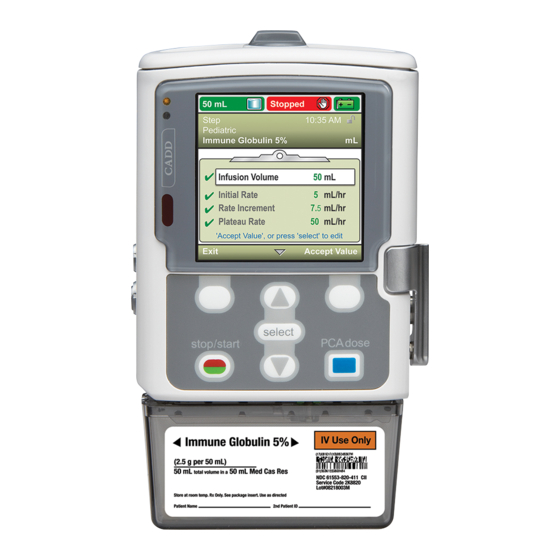
Smiths Medical CADD-Solis VIP Operator's Manual
Ambulatory infusion pump
Hide thumbs
Also See for CADD-Solis VIP:
- Manual (2 pages) ,
- Quick start manual (20 pages) ,
- Step-by-step manual (12 pages)
Table of Contents
Advertisement
Quick Links
Advertisement
Table of Contents
Troubleshooting

















Need help?
Do you have a question about the CADD-Solis VIP and is the answer not in the manual?
Questions and answers
Alarm keeps going off. Error message is “air in line”
To resolve the "Air in Line" alarm on the Smiths Medical CADD-Solis VIP pump:
1. Select "Acknowledge" to clear the alarm.
2. Close the clamps and disconnect the fluid path from the patient if air bubbles are present.
3. Prime the line to remove the air.
4. Restart delivery after ensuring that the fluid path is free of air.
This will stop the alarm and ensure proper operation of the pump.
This answer is automatically generated